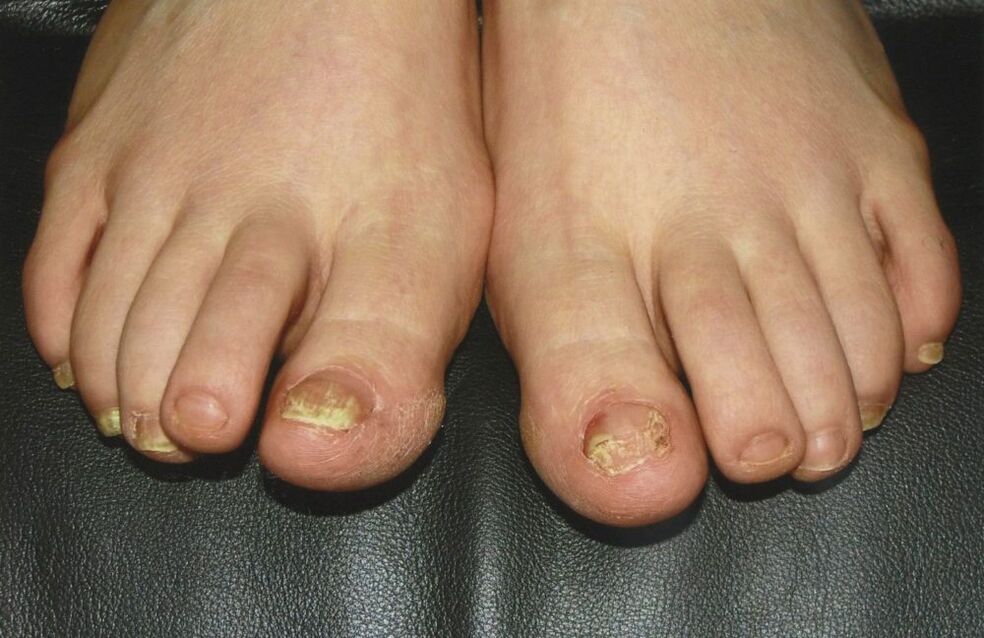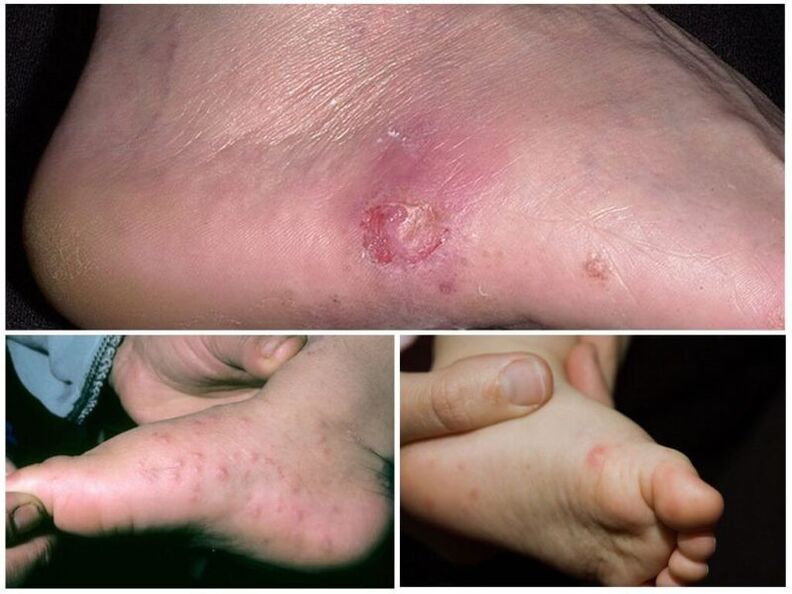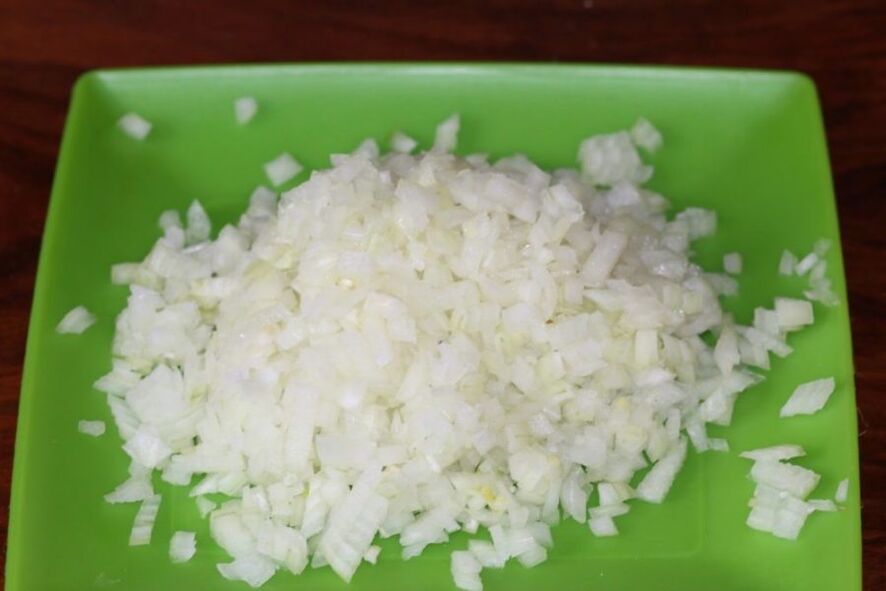
Fungal diseases are diseases caused by pathogenic microorganisms (fungi). The disease is not fatal to people, but it can cause discomfort and be difficult to treat. For the most part, people with weakened immune systems, hormonal imbalances, and those who do not follow personal hygiene rules are most vulnerable to infection. Treatment of the fungus with various medications sometimes lasts 3-4 months. To enhance the therapeutic effect of medicines, doctors prescribe traditional medicines. The key to successful treatment is early diagnosis of the disease. In the early stages, fungal diseases are more susceptible to the action of antifungal drugs.
Types and symptoms of dermatophytes
Science knows of thousands of fungi, but only a few hundred of them are pathogenic to humans.

Types of microorganisms that cause athlete's foot:
- Trichophyton;
- Dermatophytes;
- Candida.
The first signs of fungal disease can be difficult to identify. What fungus on the legs looks like depends on the type of microbes affecting the soft tissues.
interactive form
The most common type of fungal infection. It occurs in summer, when sweating in the legs increases. The folds between the fingers are affected first, and then the infection can infect the nearby area and the nail plate.
First sign:
- dry skin between the fingers;
- cracks and sores;
- severe itching and burning;
- Peeling and discoloration of the epidermis.
scaly
This type of fungal infection affects the soles of the feet. The skin looks rough, corns, keratinized areas, and deep cracks appear. When walking, people feel pain.
The disease progresses rapidly, involving the surrounding area and the nail plate. In advanced cases, the nail changes color, shape, and begins to collapse.
important!
When a fungal infection is suspected for the first time, a doctor should be consulted immediately for examination and treatment.
form of hyperhidrosis
This fungus is rare. The first symptom is watery multi-chambered blisters with cloudy contents on the skin. Instead of burst formation, ulcers appear, combining into continuous erosions.

The main risk of this fungal disease is increased concomitant infection. Pathogenic microorganisms infiltrate the wound and cause other skin diseases. Without prompt treatment, large areas of the legs are affected. It becomes very difficult to cure mycosis.
reason
The main way the infection spreads is through contact. If you don't follow basic rules of personal hygiene, you can become infected through household items used by patients. The exfoliating particles of the epidermis remain in shoes, towels and infection sites along with the pathogens of the disease. Once on the surface of a healthy person's skin, the fungus begins to multiply actively.
Spores of pathogenic microorganisms can survive in the environment for months until they enter favorable conditions. Public places - swimming pools, showers, baths, saunas, gym locker rooms - carry a great risk of infection.
To avoid infection, it is necessary to observe hygiene rules: change socks every day, wear comfortable shoes so that your feet do not sweat, dry your fingers with a towel after washing.
Treating fungi with drugs
An important factor in getting rid of dermatophytes is the examination and prompt treatment prescribed by the doctor.
Getting rid of fungus is quite difficult. You will need a full range of drugs for external and systemic action. First, you need to identify the type of pathogen. This can only be done in specialized laboratories.
ointment, cream
This type of drug has a strong ability to penetrate deep into the affected tissue, reaching the mycelium.
There are two types of antifungal creams:
- azoles. Inhibits cell growth and destroys mycelium. The course of azole ointment usually lasts about a month;
- Allylamine. It has an adverse effect on yeast and mold. This ointment has antifungal and anti-inflammatory properties. Refers to inexpensive, effective means. The course of treatment is usually 3 months.
Benefits of the ointment:
- No harmful effects on the gastrointestinal tract and liver;
- Local use allows you to minimize your exposure to pathogens;
- Versatile and can be used to treat skin and nail fungus.
Features of using antifungal creams:
- Thoroughly wash the feet and dry them with a towel before taking the medicine;
- Apply the drug in a thin layer to the affected surface, rubbing motions;
- Avoid getting the medicine on mucous membranes - nose, eyes, mouth;
- Follow directions for use and dermatologist advice.
tablet
For more effective treatment of advanced mycosis, systemic therapy is prescribed along with topical topical preparations.
Tablets used to treat severe forms differ in their active substances:
- Based on ketoconazole. It is prescribed for the treatment of superficial mycosis that is not suitable for treatment with topical medications. Destroys yeast, dimorphic fungi and dermatophytes;
- Based on terbinafine. works against dermatophytes;
- Based on griseofulvin. Acts on dermatophytes. It prevents fungi from multiplying and destroys cell walls. The toxicity of the drug has increased, and modern medicine is gradually replacing it from the pharmacological market;
- Based on fluconazole. Tablets belong to the azole class. Helps get rid of disease quickly.
Medications that stimulate the immune system and vitamin-mineral complexes are also prescribed alongside the treatment of fungal foot infections to better fight the disease.
Healing at home with folk remedies
Fungus can only be removed at an early stage or with alternative drug formulations in combination with pharmacy products.
important!
You should get tested and consult your doctor before starting self-treatment at home.
iodine
Universal preservatives are not only bactericidal but also antifungal. It is recommended to lubricate the affected area at night. Before this procedure, a sensitivity test is necessary. To do this, apply a small amount of iodine to the bend of the elbow. You can use this method if your skin doesn't have redness, burning, or itching after a few hours. Take a foot bath before bed, then wipe your skin clean with a towel. In order not to cause chemical burns, iodine must be diluted 1: 1 with medical alcohol. Use a cotton swab to apply a thin layer of the solution evenly to the area affected by the fungus. Wear cotton socks on top. In addition, for prevention, the nail plate is also processed.
You can make a valid "speaker" based on iodine:
- Grind into powder 14 antifungal tablets;
- Mix with 100 ml 1% Dimexide and leave in the dark for a day;
- Add 10 ml of iodine and vinegar.
Store the resulting mixture in the refrigerator and stir thoroughly before using. It should be applied to the affected area of the skin using a cotton swab 1-2 times a day. The course of treatment is 1 month.
hydrogen peroxide
Another well-known antiseptic that helps fight the manifestations of leg fungus. The solution is used in the form of an application applied to the problem domain. Ten minutes twice a day is enough to overcome early stage fungal disease in 5-10 days.
Peroxide-added leg baths are believed to be useful. Dilute 1: 1 with water. A solution is not enough, but simply put the affected foot in it. The process takes 30-40 minutes. The fluid should not get on healthy skin, as it can severely dehydrate the soft tissue.
Celandine
This medicinal plant has successfully treated many skin diseases, including fungal diseases. Decoctions are used for compresses and baths. If freshly harvested plants are possible, then you can try to cure the fungus with fresh juice.
To do this, tear off the bush and wash it under running water. Prepare the legs - steam out, remove the scales. Yellow sap appears on the cut of the stem. They lubricate affected surfaces. Self-medicating with celandine at home, you should be very careful. This plant is poisonous. Its sap can cause severe skin burns.
For steaming, prepare 5 tablespoons of soup. l. Herbs per 1 liter. boiling water. Pour the solution into a container with a tight-fitting lid for 20 minutes. After that, the foot bath is complete.
Apple Cider Vinegar
An acidic environment will help remove fungi that cannot reproduce and exist. Apple cider vinegar is used in foot baths and applications.
If the affected area is small, soaking a cotton pad or a cotton cloth with a caustic substance will suffice. In case of extensive spread, protect healthy areas of the skin with an oily baby moisturizer and wear socks soaked in vinegar.
Use it to acidify the foot bath water. Following this steaming, the skin is thoroughly dried and other drugs or pharmaceutical preparations of natural origin are applied.
other family therapy
Traditional medicine offers a variety of techniques for eliminating fungi and their manifestations. These funds are easily prepared independently of any components available to the home.
Homemade ointment:
- Mix equal parts yellow sulfur, copper sulfate and goose fat in an enameled container. Bring to a boil over low heat and transfer to a glass jar. The ointment is stored in the refrigerator. Apply to affected skin areas morning and evening;
- Add wood ash to goose oil. Blend until smooth. Lubricate problem areas with the mixture twice a day;
- Mix butter with chopped garlic. The resulting substance is applied to the affected skin at night.
Ointments prepared according to traditional medical formulas have a positive effect only in the initial stages of the disease. For advanced fungal diseases, they are used in combination with tablet formulations.
compression:

- Onion garlic. A medium onion and 2 cloves of garlic are crushed into a pulp. The mixture is spread in a thick layer on the skin, covered with a plastic bag, and secured with a bandage. There was a cotton sock on top. This procedure is carried out before going to bed. In the morning, remove the compress and wash your feet with warm water and soap. This approach will help to cope with the disease within 7-10 days;
- Celandine and Tea Tree Oil. 1st. l. Mix chopped herbs with oil until you get a paste. It is heavily applied to the localized and insulated areas of the fungus, as in the previous formula;
- Herbal Compress. In a saucepan, combine 400 ml sunflower oil, 1 tbsp. l. Vanilla comfrey, mint, calendula and radiola. Heat the mixture to 50-60 degrees over low heat. Stick to the shade during the day. Remove dry ingredients through a sieve or cheesecloth. Using the oil mixture, compress at night for 1-2 hours. The safety of this recipe allows you to use it in childhood.
important!
You should steam your legs for 15-20 minutes before any medical procedure.
tray:
- The most common and easiest solution for steaming involves 1 tablespoon. l. Table or sea salt, 1 tbsp. l. Baking soda and 1 liter. water. The process takes 15 minutes. Then rinse the legs with warm water and dry them;
- Brew an espresso and soak your feet in it for 5 minutes after cooling. Afterwards, rinse with water;
- Pour two liters of boiling water over the herb mixture: 2 tablespoons. l. Chamomile flower, horsetail, flaxseed. Once cooled to a tolerable temperature, you should soar your feet in the resulting broth for 15 minutes.
prevention
Any disease is easier to prevent than to treat. So, in order not to get sick, you should take some precautions.
Tips to help avoid infection:
- Wear natural, high-quality shoes so your feet won't sweat;
- Replaceable rubber slippers must be worn in public places (bathrooms, saunas, showers, swimming pools, changing rooms);
- Use only personal shoes;
- Maintain immunity.

Tinea pedis is an insidious disease. It's easy to get infected, but hard to get rid of. Often people start getting sick because the fungal disease doesn't appear right away. You should pay attention to your body and seek medical help at the first suspicious symptoms.















